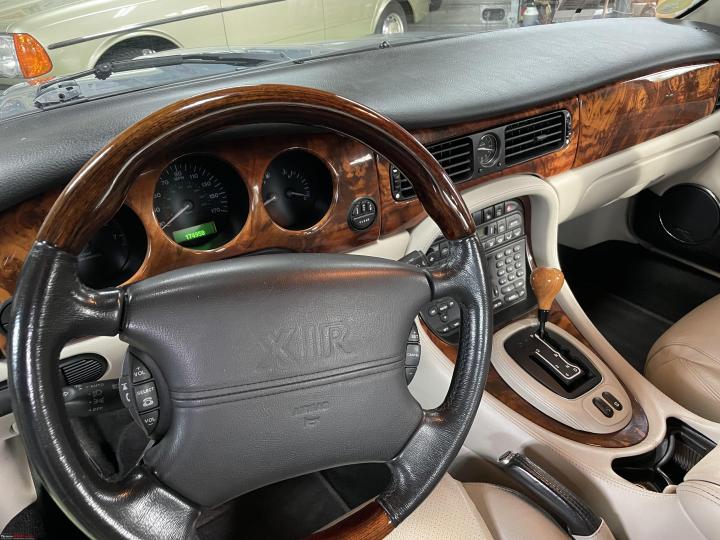News
Why cars don't get wooden trim / panels on the interiors anymore?
Providing some wooden inserts would elate the look and feel of the car.
BHPian On4Wheels recently shared this with other enthusiasts.
The streaks and lines of the wooden panel do mesmerize us. That is why, we choose wood over any other materials to furnish our homes. Over time, we found many alternatives to wood such as PVC, concrete etc. However, we felt that something is missing in those substitutes: the life in them. Then, we added a wooden look and feel to mimic the life of the wood. In short, we are mad about the wood in furnishing our home (We want alternative materials that also should have a wooden feel). Let us, step out of the house and get into our second home: the cars. The dashboards of a car are mostly made of plastics: some are soft, some are hard ones; some are glossy, and some are matte. No wood or wooden texture! Do you find the plastic dashboards boring? Are you missing the luxurious looks of the wooden dashboard?

There are some luxury cars like Porsche that offer wooden interior packages to their customers. Also, you can find some painted faux wood grain in some of the budget cars. But these wooden dashboards (inserts) are just isolation in the automotive industry. Despite its mesmerizing look and feel, I feel, car manufacturers are not giving much thought to considering wood as an interior material. Providing some wooden inserts would elate the look and feel of the car. What could be the real reason behind discarding wood despite of being a natural material? Why do manufacturers choose costly carbon fibre instead of wood? Do you think wood as a material does not have any future in the car Industry? Why is wood losing its market when we move towards environmentally friendly materials?
Here's what BHPian audioholic had to say on the matter:
If you are focusing on the use of natural wood, then here are the reasons why you won't find it on mass-produced cars:
- You really need well-seasoned and well-treated wood to be fit enough to use in a car
- Design and production consistency can't be achieved using natural materials compared to artificial materials like plastic and imitation wood.
- It's a massive fire Hazard especially if used without a protective coating which will increase the piece price
- Wood cannot be used without a reinforcement like metal or plastic which will again increase piece cost
- Can be sensitive to the use of cleaning materials etc and will degrade in the long run
- Not really environmentally friendly since it will involve cutting trees
Here's what BHPian Jeroen had to say on the matter:
Another reason to buy old second-hand cars! Lots of cars, down to fairly ordinary family saloons used to have wood veneer panels. (e.g. Triumph)
Mind you, the only ones to do wooden interiors properly are the British, fair is fair.
Love my Jaguar!! Proper wooden veneer. Gorgeous, but very expensive to replace. Also, if you scratch one panel, you might have to replace all panels, because it is almost impossible to get an exact match. Typically, these panels are only sold in complete sets. It’s all or nothing so to say.
Here's what BHPian V.Narayan had to say on the matter:
Wood, I mean real wood requires a lot of polishing & treating to get the right shape, look, sheen, strength, waterproofness etc. This does not lend itself easily to mass manufacture and standardized quality outcomes. Modern plastics are more amenable to mass production and maybe are cheaper. That is the reason I believe wood has gone out of fashion. Also till the 1970s high quality plastics as we know them today did not exist - metal, wood, tin, and leather were the materials in use. Even boxes of biscuits or Ravalgoan toffees were made of tin. In India, at least plastics in the interiors came with the Maruti 800.
Well-crafted wood is a delight to behold as the photos below of a 6-year-old Lexus ES300h depict. What some writers have mentioned about water resistance does not need to be true. Remember sailing ships and entire houses made of wood in the USA. Properly treated wood is an amazingly versatile material - hard enough to bear weight, soft enough to chisel, and malleable enough to mould within limits.
Here's what BHPian ashivas89 had to say on the matter:
Often in manufacturing, the cost is determined by the time to make something and +manual intervention than the cost of the material itself.
With plastic, it takes minutes to manufacture something in its final form with minimal manual intervention which conforms to close tolerances without any additional finishing steps being required.
Wood will take several man-hours, even if we talk about automated precision milling using the latest CNC tech. After bringing it to a certain form, within tolerances, the part will still require several finishing steps like polishing etc. Not even factoring in the cost of wood here.
This is why we don't see billet metal parts interiors either despite metal being cheaper than wood.
Want a trim piece in fake carbon fibre, brushed aluminium or piano black? DONE! A machine will stamp out dozens of these by the time a block of wood is even loaded into a CNC.
In our industry, time is money.
Check out BHPian comments for more insights and information.















.jpg)












